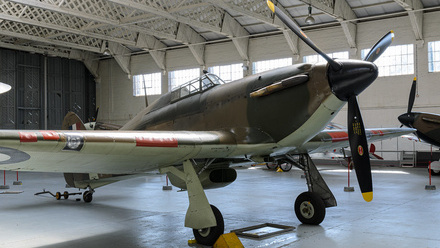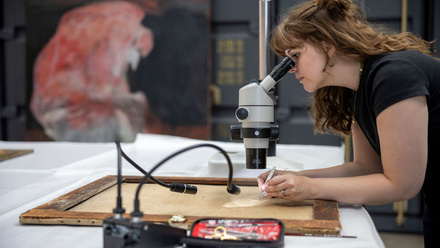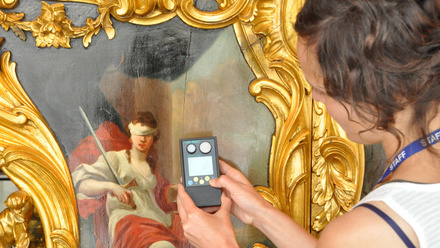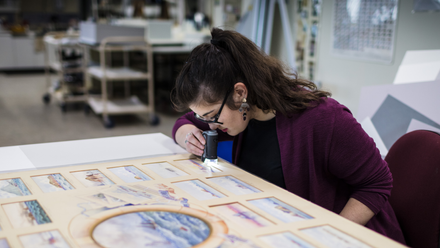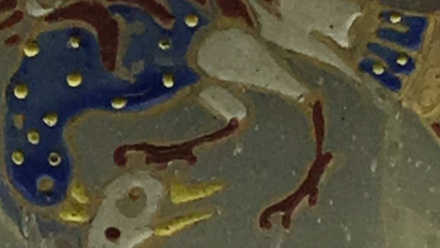Leanne Tonkin’s work has taken her across the world, from the People's History Museum in Manchester to The Metropolitan Museum of Art in New York. Here, the former Icon intern shares her highs, lows and lessons learned from seven years in the field.
Starting off
When I first began working as a Textile Conservator, I had no expectations of where my initial internship would lead me. I was just grateful I had secured 12 months of work in a field where limited opportunities are available. I had self-funded my living expenses and other aspects of my research during my training and I was relieved to be in a position to begin repaying my careers development loan.
I worked on the banner collection at The People’s History Museum in Manchester, where I completed my first year as a qualified conservator. I enjoyed how the collection threw up so many complex scenarios involving varied treatment approaches in preserving problematic surfaces.
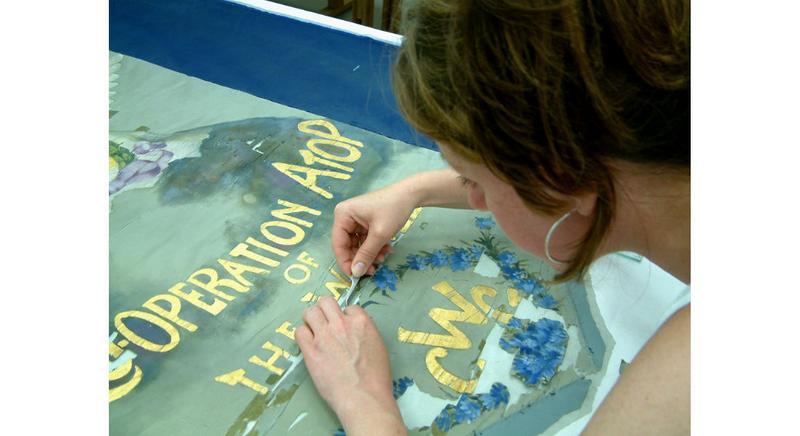
Communication and public engagement are essential elements for the story of the museum and I soon learned the value of the public role of a conservator. I had never worked in a public building which served public cultural significance. Talking about your work gives you value as a professional whilst working within the infrastructure of your institution.
Using all kinds of media and communication platforms to share your work and work of other conservators allows institutions and other disciplinary areas to hear about varied areas of preservation. Staying in the eye of the public, of all social agendas, will never harm the important role of preservation whether this be controversial or a pragmatic point of view.
Perseverance and self-initiative
Patience is a virtue and I appreciate this aspect of working as a conservator can wear very thin. In fact, many conservators fall out of conservation because there are simply limited opportunities to develop; there are few jobs and often training opportunities are expensive and time consuming. This is an aspect of professional development that many private conservators and heritage institutional infrastructures cannot afford.
Never be afraid to reach out to experienced conservators for advice even if some responses are negative
Think long term about your professional development, even if you think you are in a stagnant or restrictive situation. I am a strong believer in moving around and seeing how other disciplines approach their work. So make your own contacts in the field, never be afraid to reach out to experienced conservators for advice even if some responses are negative.
Make your own professional visits to studios and institutions if you think it relates to your work and interests. Be in control of your own development.
The unexpected challenges
I have found myself in working environments where learning opportunities have been restrained and limited. Do make the situation work for you, even if it means negotiating with your supervisors or mentors or other colleagues inside or outside your institution.
I have remained in contact with my mentor who I had during my internship and the advice I continue to receive is invaluable. You may find yourself in a place where you need to touch base with the value of what you do – ‘a refresher’. Don’t be afraid to be honest about how you feel in terms of your learning; find a good mentor who is an experienced conservator to confide in.
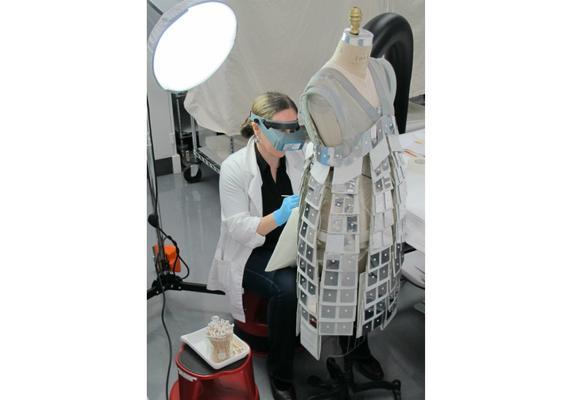
Leanne works on ‘One Hundred and Eleven Mechanical Dress’ by Hussein Chalayan, British; ca. spring 2007 (Image: Glenn Petersen, The Metropolitan Museum of Art)
There are the financial challenges of being a conservator. I am currently based in New York working for the Costume Institute at The Met. Affording to live and work in New York as a research fellow is a challenge so I am making the most of my time and opportunities. I always keep informed with funding opportunities through professional bodies and recommendations and I know even with this support it can still be financially challenging to attend workshops and conferences.
Remember to list all personally financed aspects of your professional development as this will indicate your own personal determination. But always acknowledge the funding bodies that have helped you and ensure they are listed on your résumé. Again, this acknowledgement will illustrate to future employers your initiative to develop as a conservator.
I never expected to work on such an array of materials as a Textile Conservator
I have found myself working with all kinds of materials from plastics to leather, to paper, to glass, to metal, to electronic media, to modern painted textiles, all requiring different trains of thought. I never expected to work on such an array of materials when qualifying as a Textile Conservator.
Multi-disciplinary approaches are required on most of the projects I work on. I suspect this is because I have worked for a few institutions which have provided a wider insight into the realms of textile and costume conservation.
My advice is avoid limiting your ideas within the realms of your discipline/institution, be prepared for the spillovers in your approach to assessing and treating objects. I have found myself having to undergo rigorous research on degradation patterning of various plastics as part of my current project at the Met. This involves working alongside conservation scientists and me becoming more familiar with polymer degradation of varied plastic materials. I soon realised nothing grows inside your comfort zone.
The broader picture of conservation
I wish I was more aware of the dilemmas of researching and conserving modern materials and the importance of heritage science which substantiates this field of conservation.
I never realised disciplines like time-based media and working with short-term expectancy of materials and ephemeral aspects of conservation existed. These areas were not introduced to me during my training.
Vogue's video, The Future of Fashion and the Making of "Manus x Machina", depicts Leanne working in the studio at the Met
I have worked alongside costume conservators at Philadelphia Museum of Art and the Costume Institute who deal with these dilemmas on a regular basis. Fashion designers like Hussein Chalayan provide many challenges in textile and costume conservation where time-based media, plastics and metal components make up a huge part of many of his designs. In fact, many of the pieces requiring conservation work do not involve a textile substrate or the textile substrate is the least important aspect of the piece.
I wish I had spent time visiting conservation studios to gain a better idea of the other specialisms of conservation
The idea of working with historically significant objects within a museum environment sounded interesting and rewarding. I was shocked at the low salary level expectations despite the level of skill and theory required to embark on a career in conservation. I was surprised to learn how competitive it is to gain museum work, despite low salary levels and short-term, unsecure positions.
The best advice I can give is remain open minded despite any boundaries you may encounter. If you begin to feel held back, think about how you can change the dynamic of the value of your work and do not be afraid to be ambitious.
Lead image: Exhibits from Manus x Machina at the Metropolitan Museum of Art; Bennett Raglin, WireImage, Fair Use


